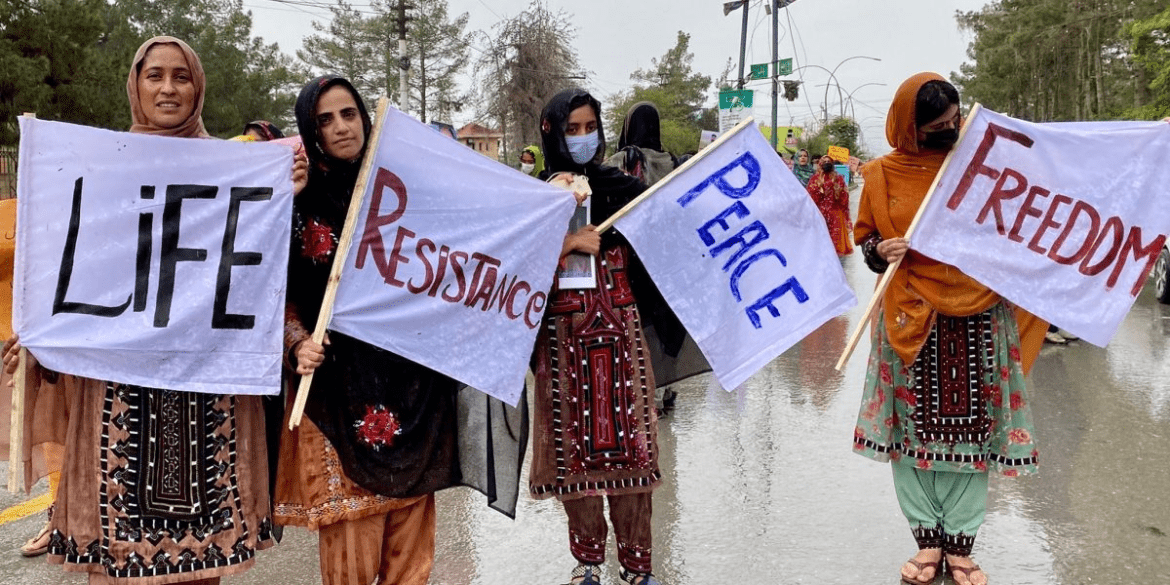AI Generated Summary
- The Pakistani state’s inability to unite the Baloch under a common leadership allows it to exploit tribal rivalries and co-opt discredited nationalist politicians.
- Despite ideological differences, a combined Baloch and Pashtun resistance poses a grave danger to Pakistan and the region.
- The situation in Balochistan is bleak, and the Pakistani state’s repressive measures only fuel the fire of resistance.
As President Asif Zardari visits Gwadar, Balochistan remains engulfed in turmoil. This marks his attempt to quell the ongoing insurgency, now in its third decade since 1947. Zardari’s previous efforts, including the economic and political package ‘Aaghaz-e-Huqooq-e-Balochistan’ in 2009, failed to address Baloch grievances. His current outreach, marked by calls for political dialogue and promises of development, appears equally insincere and hollow.
The president’s calls for enhancing law enforcement capacity highlight the incongruity of his message. The law enforcement agencies in Balochistan are notorious for their extortion, kidnapping, smuggling, narcotics, and human trafficking networks. These actions make them the greatest obstacle to peace in the province. The Pakistani state, dominated by Punjab, seeks dialogue not with genuine Baloch representatives but with those willing to subserve the Punjabi establishment.
Since its forcible occupation by Pakistan in 1948, Balochistan has simmered with discontent. The first stirrings of the current insurgency began in 2001 and were galvanized by the murder of Nawab Akbar Bugti in 2006. Over the last three years, the movement has gained momentum, especially after the Afghan Taliban’s resurgence. Despite media blackouts imposed by the military, the Baloch movement has not lost steam; rather, it has acquired dangerous dimensions, threatening to challenge Pakistan’s territorial integrity and constitutional structure.
The unrest in Balochistan manifests along two parallel tracks: militant resistance and peaceful protest. The militant track involves young Baloch across class and tribal lines challenging the Pakistani Army. Recent years have seen increased attacks in both frequency and intensity. The second track involves peaceful protest and public mobilization, exemplified by movements like the Haq Do Tehrik in Gwadar, which demanded basic rights and livelihoods. Despite the state’s brutal crackdowns, the movement forced concessions, though the promises made by the state were not honored.
Dr. Mahrang Baloch’s Long March to Islamabad epitomizes the peaceful protest movement. Despite her failure to secure concrete concessions, her activism galvanized public support and highlighted the issue of enforced disappearances and extra-judicial killings by Pakistani security forces. Dr. Baloch’s emergence as a leader signifies a remarkable shift in Balochistan’s conservative society, where women are assuming leadership roles in both political protests and militancy.
The desperation and despondency among Baloch women, many of whom have lost family members to enforced disappearances, have led some to take drastic steps, including suicide bombings. The mutilated bodies of activists and the discovery of mass graves testify to the atrocities committed by the Pakistani Army. These brutalities fuel militancy and deepen the divide between the Baloch and the Pakistani state.
Even today, young Baloch students and activists face enforced disappearances. The current Chief Minister of Balochistan, Sarfraz Bugti, notorious for his association with state-sanctioned death squads, offers empty promises of reconciliation. The military’s brutality has failed to dampen the spirits of the Baloch, whose resistance is both political and military.
Reports of tactical alliances between Baloch militant groups and the Pakistani Taliban have intensified the threat to the Pakistani state. Despite ideological differences, a combined Baloch and Pashtun resistance poses a grave danger to Pakistan and the region. While mainstream media in Pakistan ignores the simmering situation in Balochistan, the unrest continues to grow, exacerbated by the military’s media clampdown.
Ironically, while Pakistani students and activists protest against Israeli actions, they remain silent on the repression in Balochistan and Pashtun areas. In Punjab, Punjabi students, backed by authorities and the military, have attacked Baloch and Pashtun students celebrating their culture. The Pakistani state’s response to protests in Balochistan is to crush them with brute force and impose puppet leaders like Sarfraz Bugti to suppress dissent.
The Pakistani state’s inability to unite the Baloch under a common leadership allows it to exploit tribal rivalries and co-opt discredited nationalist politicians. Until the Baloch unite under a common flag, Pakistan will continue its colonial and genocidal policies in Balochistan. The situation in Balochistan is bleak, and the Pakistani state’s repressive measures only fuel the fire of resistance.
The Baloch insurgency, driven by both militant and peaceful means, continues to challenge the Pakistani state. The Pakistani military’s brutality and media blackouts cannot hide the growing unrest. The need for genuine dialogue with the Baloch people and a recognition of their grievances is paramount. Without this, Balochistan will remain on the boil, and the situation will continue to deteriorate for Pakistan and its army.
The opinions expressed in this article are those of the author. They do not purport to reflect the opinions or views of Khalsa Vox or its members.




